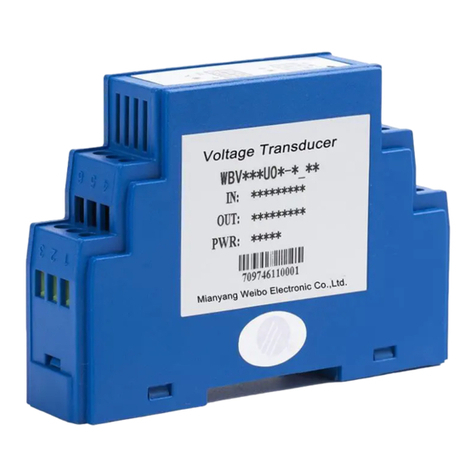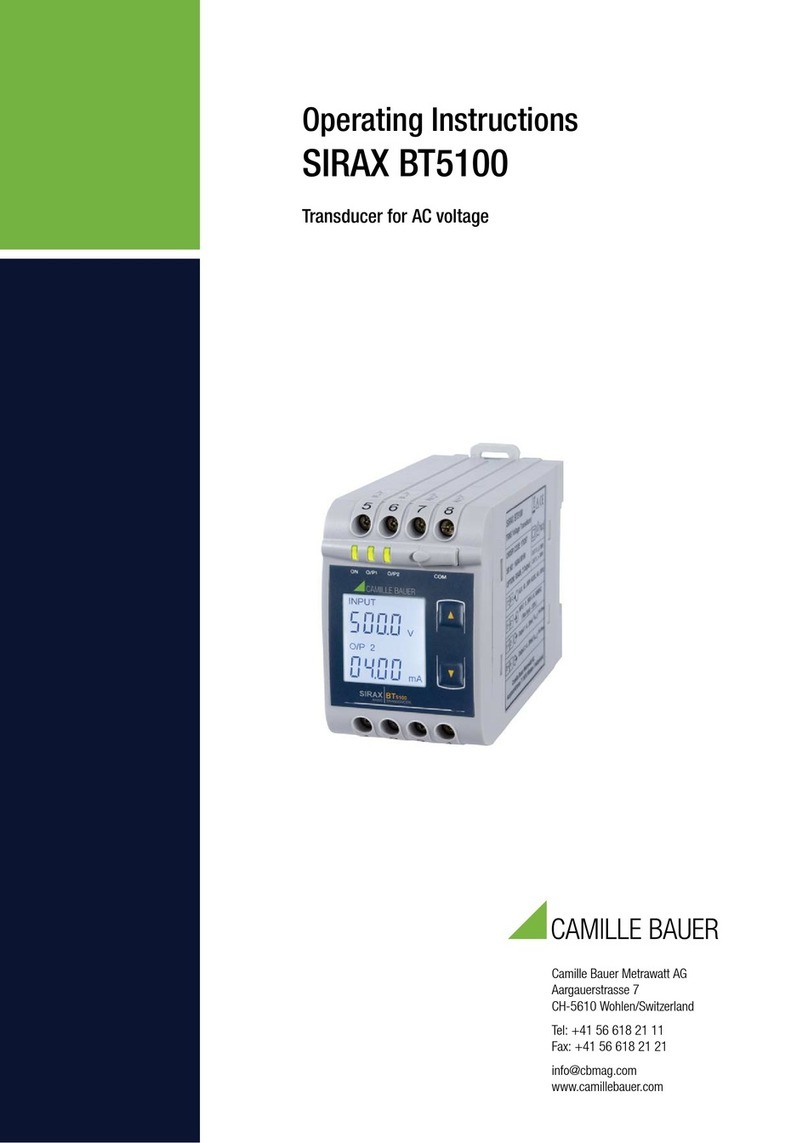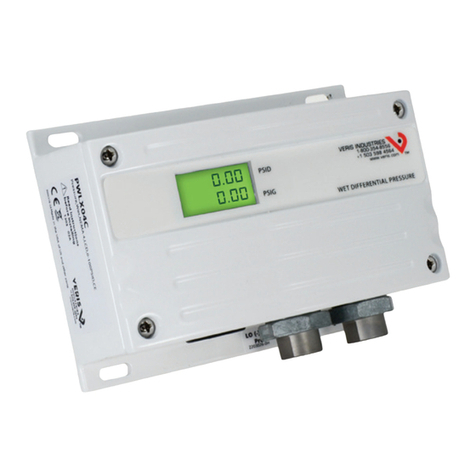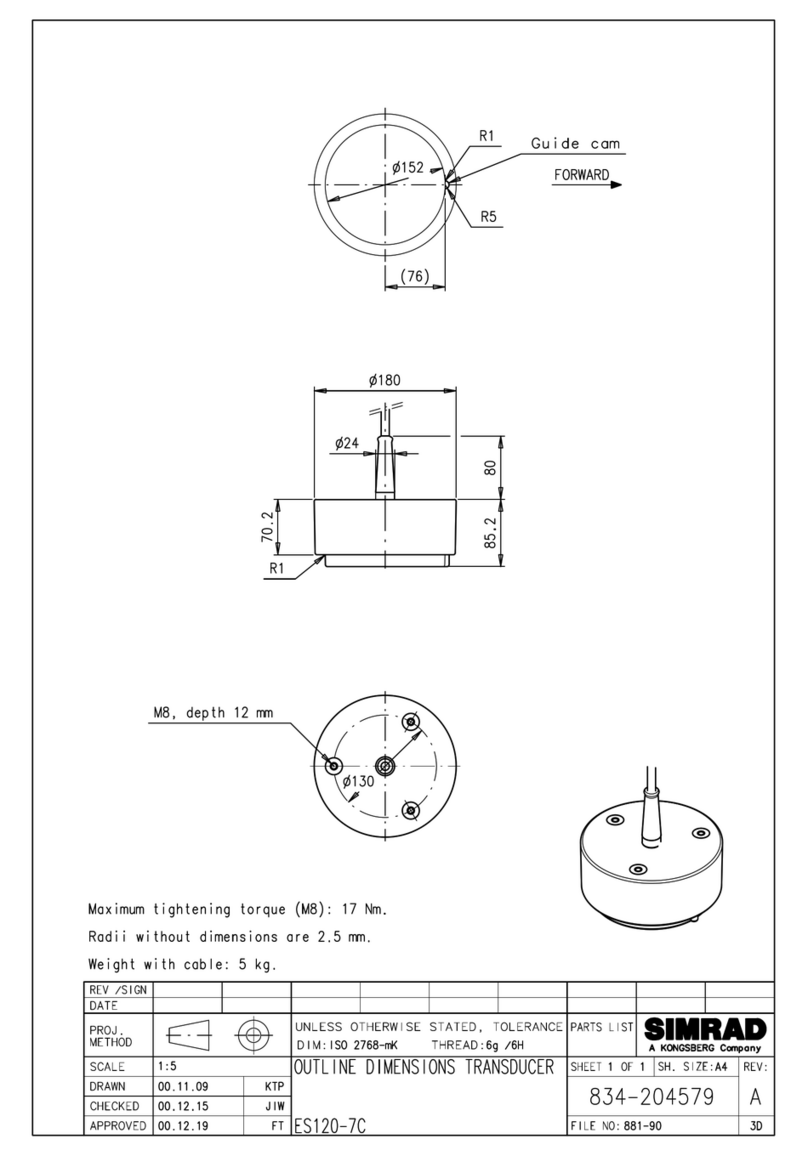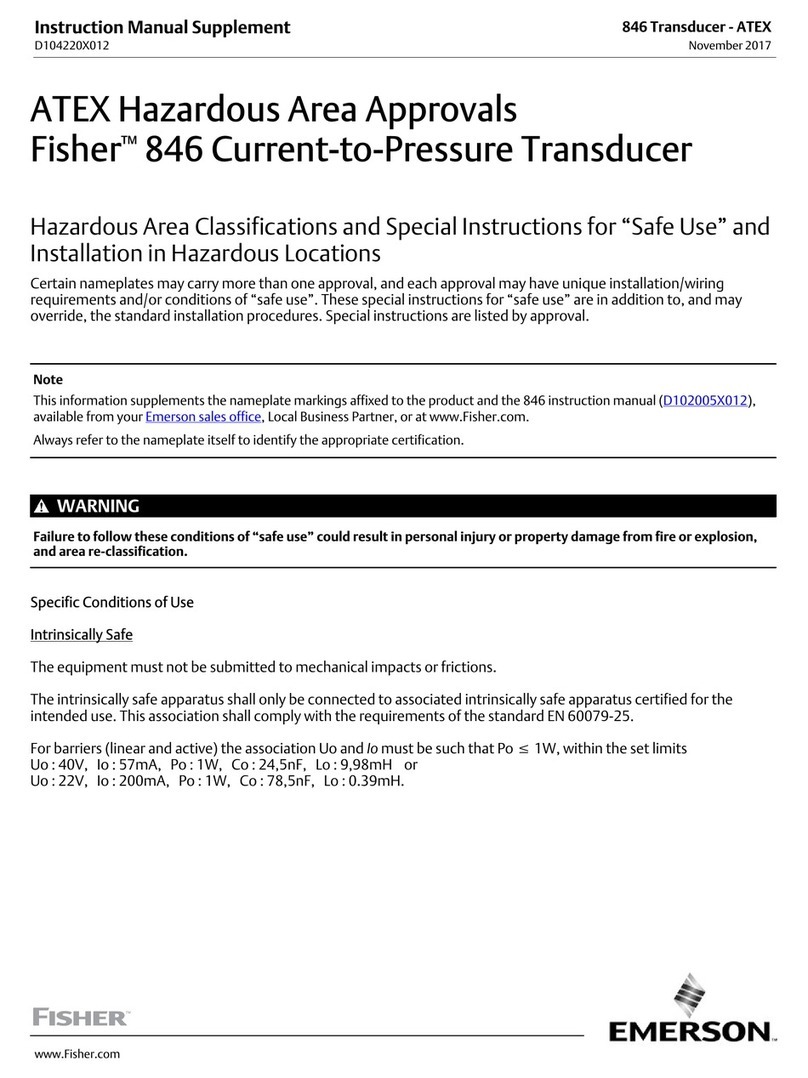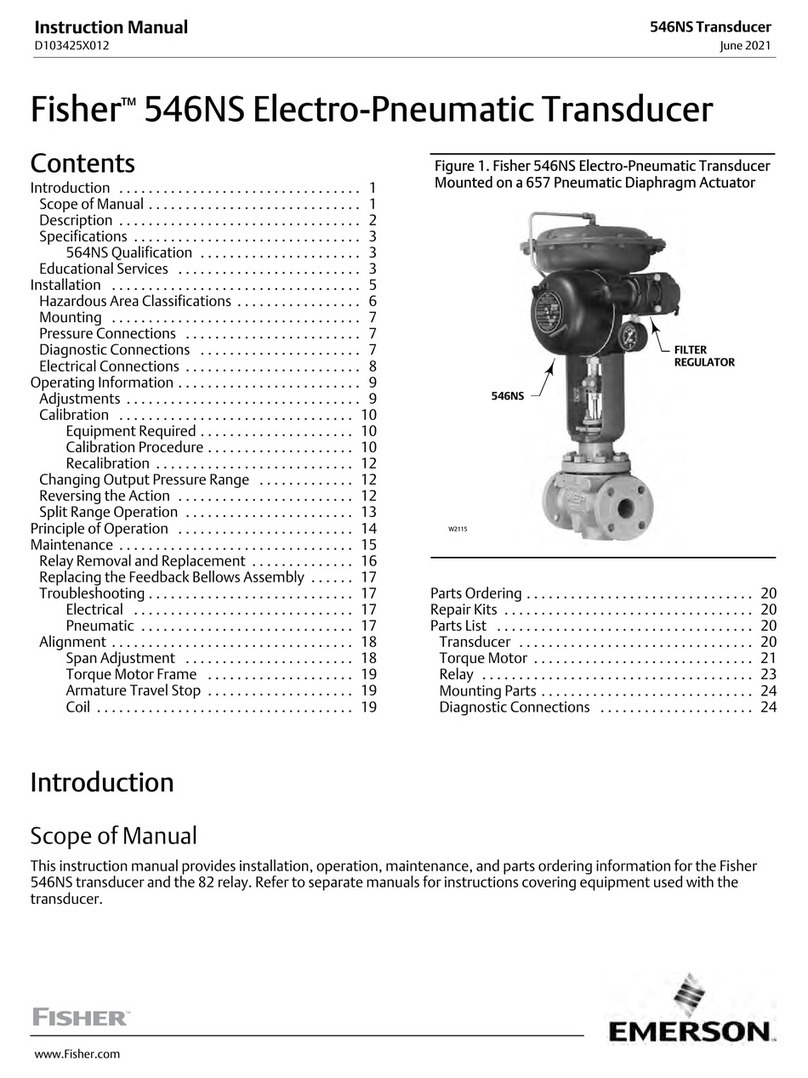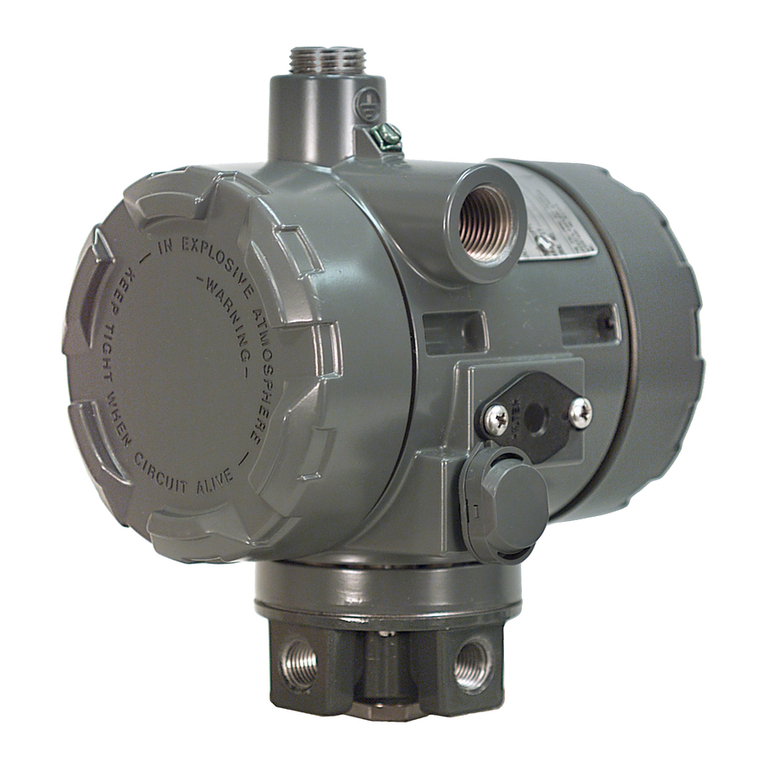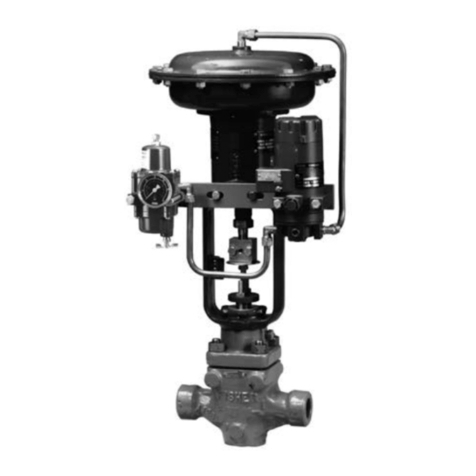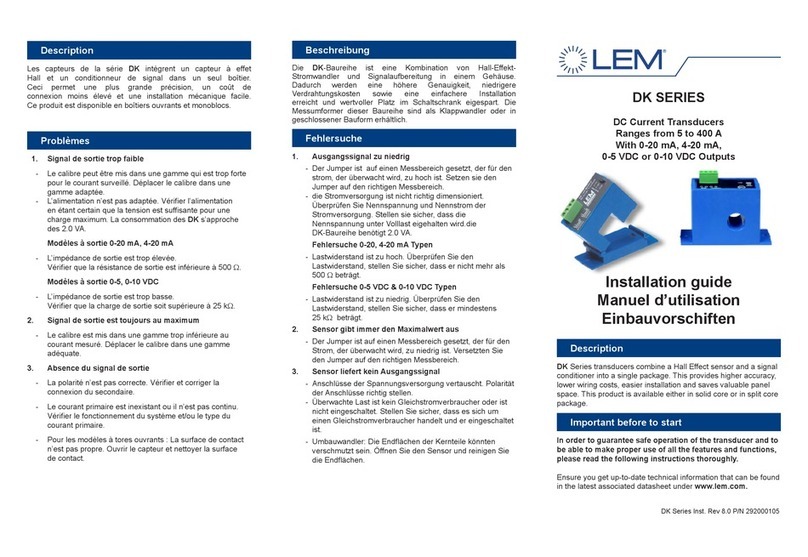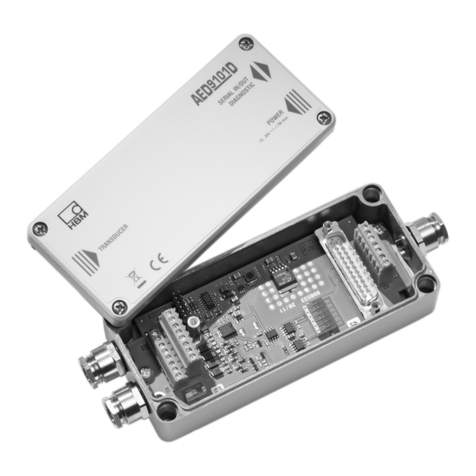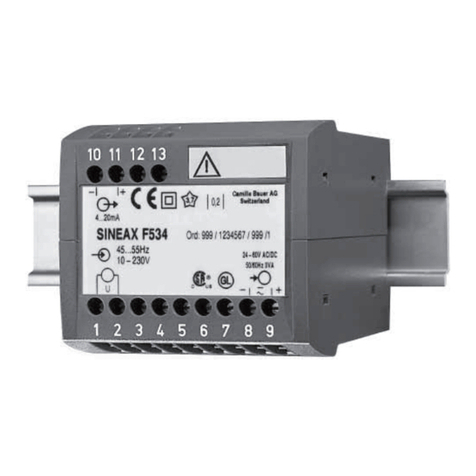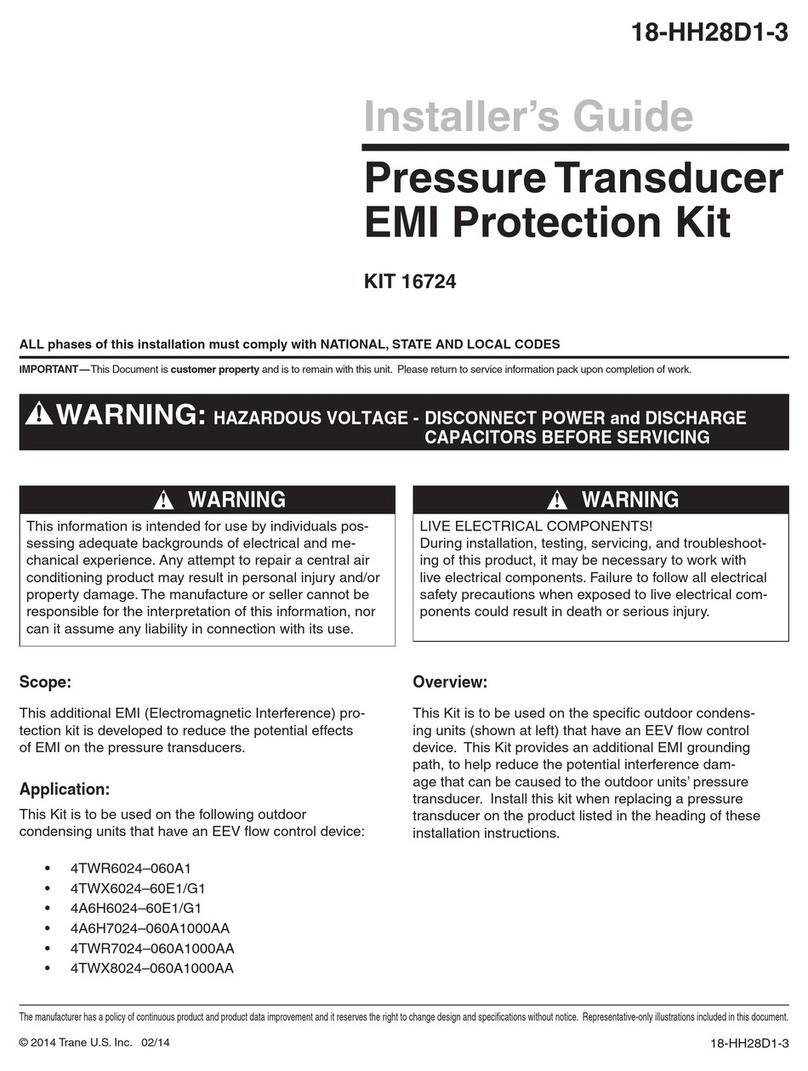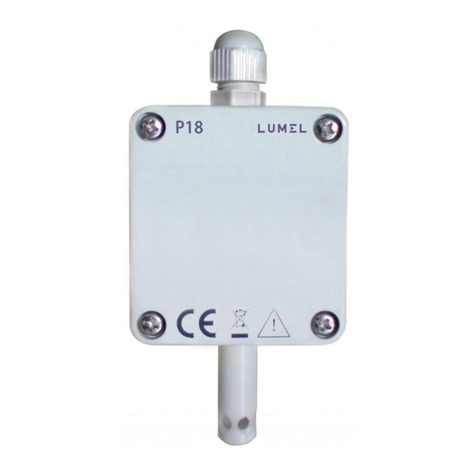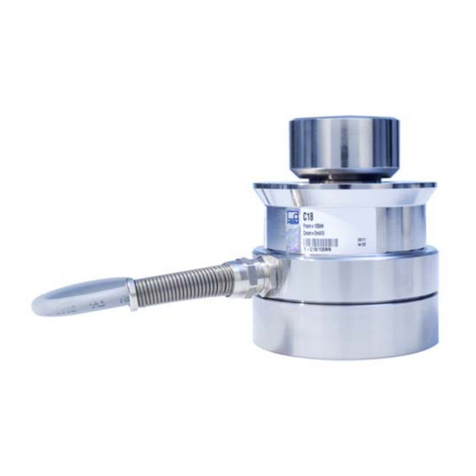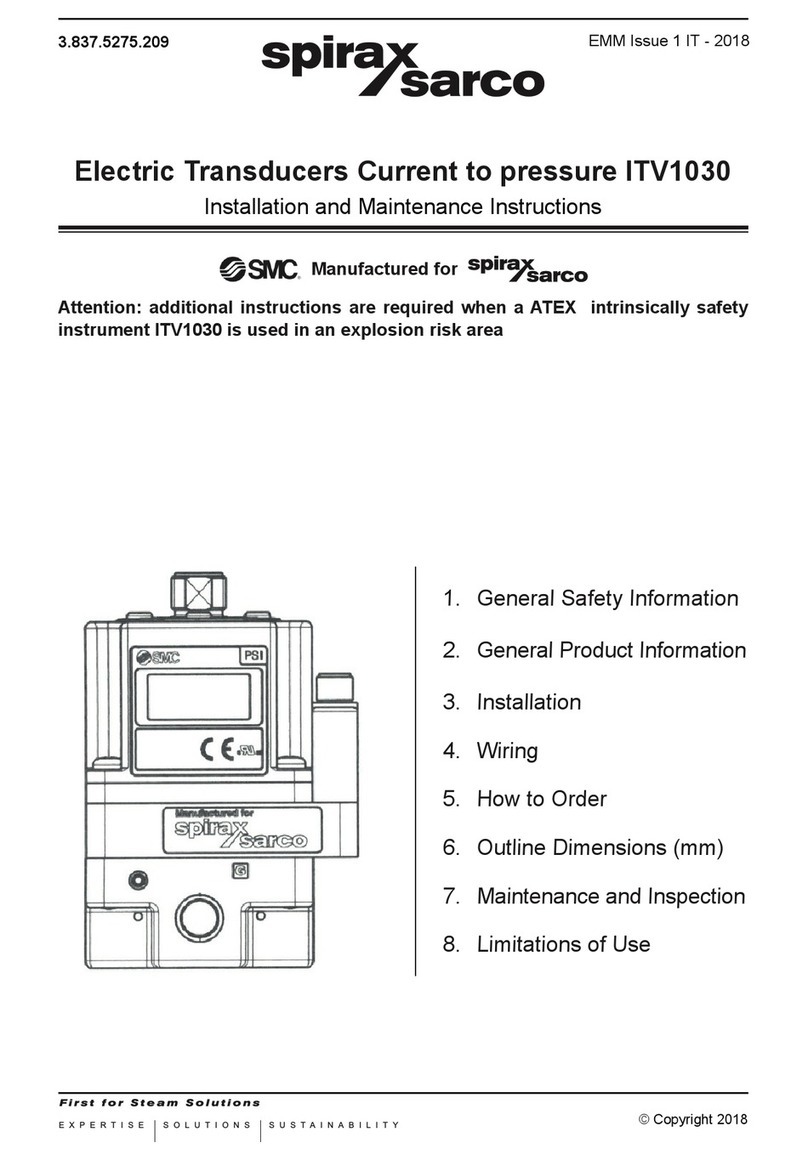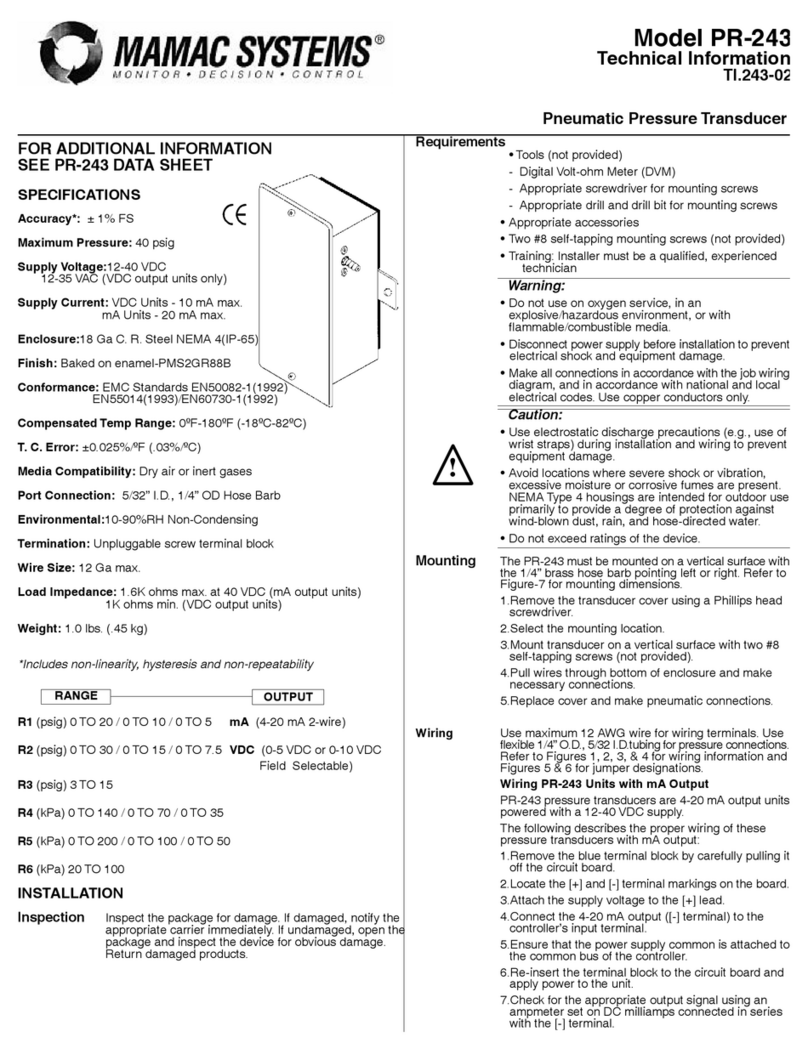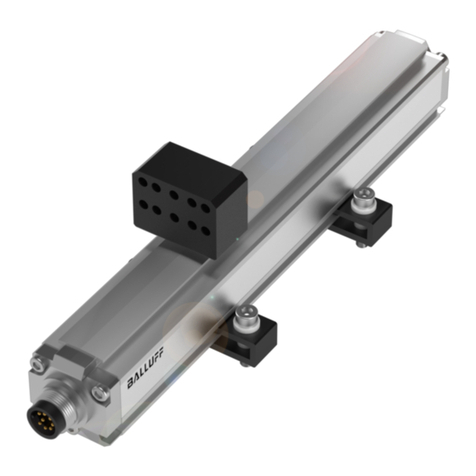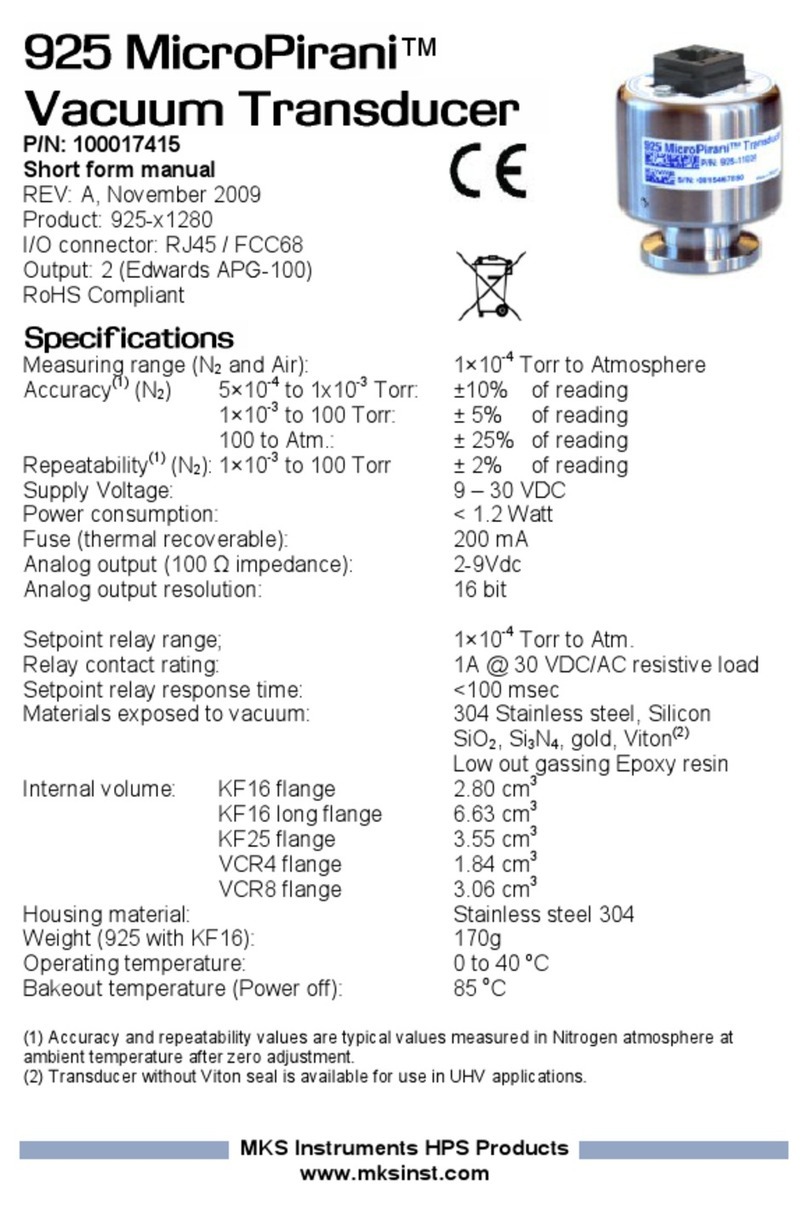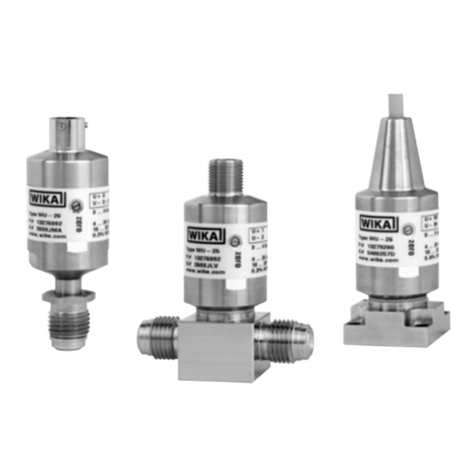
Installation
Instruction Manual
Form 5739
February 2002
2–1
Section 2 Installation2-2-
This section presents information on installing the
Type 846 and Model 3311 current-to-pressure
transducer. Figures 2-1, 2-2, 2-3, and 2-4 can be
used as references for instructions contained in this
section.
When a control valve is ordered with a Type 846 or
Model 3311 transducer specified to be mounted on
the actuator, the factory-mounted transducer is
connected to the actuator with the necessary tubing
and calibrated to the specifications on the order.
If the transducer is purchased separately for
mounting on a control valve already in service, all
the necessary mounting parts are furnished, if
ordered. This includes the appropriate bracket for
attaching the unit to an actuator boss (with tapped
holes) or for attaching it to the diaphragm casing.
If preferred, mounting parts can be supplied for
mounting the transducer on a 2-inch (51 mm)
diameter pipestand, a flat surface, or a bulkhead.
Transducers also can be ordered separately for
mounting on a control valve assembly already in
service. The transducer may be ordered with or
without mounting parts. Mounting parts include the
appropriate bracket and bolts for attaching the unit
to an actuator boss (with tapped holes) or for
attaching it to the diaphragm casing.
Mounting
The transducer is designed for mounting on a
control valve, 2-inch (51 mm) diameter pipestand,
wall, or panel. Figures 2-2, 2-3 and 2-4 show
recommended mounting configurations. The
mounting positions shown allow any moisture
buildup in the terminal compartment to drain to the
signal wire conduit entrance. Any moisture in the
pilot stage area will be expelled through the stroke
port without affecting pilot stage operation. In
applications with excessive moisture in the supply
air, vertical mounting allows the most effective
drainage through the stroke port.
Mounting is accomplished with an optional universal
mounting bracket. Before mounting the transducer,
note the following recommendations:
DEnsure that all bolts are fully tightened. The
recommended torque is 22 NSm (16 lbfSft).
DBolts that connect to the transducer and to a
valve actuator should have the lock washer placed
directly beneath the bolt head and the flat washer
placed between the lock washer and bracket. All
other bolts should have the lock washer next to the
nut, and the flat washer placed between the lock
washer and bracket.
DDo not mount the transducer in a location
where foreign material may cover the stroke port or
exhaust port. See the descriptions of the stroke port
and exhaust port later in this section.
Pressure Connections
As shown in figure 2-1, all pressure connections are
1/4-18 NPT female connections. Use 3/8-inch (9.5
mm) outside diameter tubing for the supply and
output connections.
Supply Pressure
WARNING
Personal injury or property damage
may occur from an uncontrolled
process if the supply medium is not
clean, dry, oil-free, or non-corrosive
gas. Industry instrument air quality
standards describe acceptable dirt,
oil, and moisture content. Due to the
variability in nature of the problems
these influences can have on
pneumatic equipment, Fisher Controls
has no technical basis to recommend
the level of filtration equipment
required to prevent performance
degradation of pneumatic equipment.
A filter or filter regulator capable of
removing particles 40 microns in
diameter should suffice for most
applications. Use of suitable filtration
equipment and the establishment of a
maintenance cycle to monitor its
operations is recommended.
WARNING
Personal injury or property damage
could result from fire or expolsion. Do
not operate transducers with the
CENELEC flameproof options at a
supply pressure in excess of 1.4 bar
